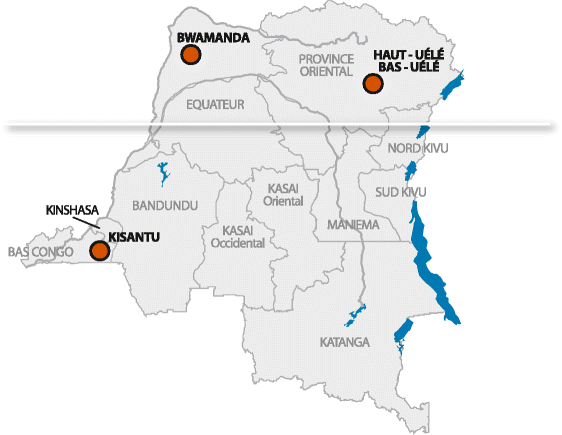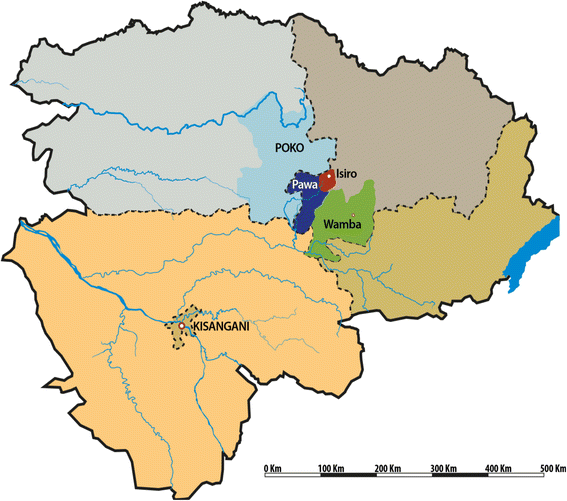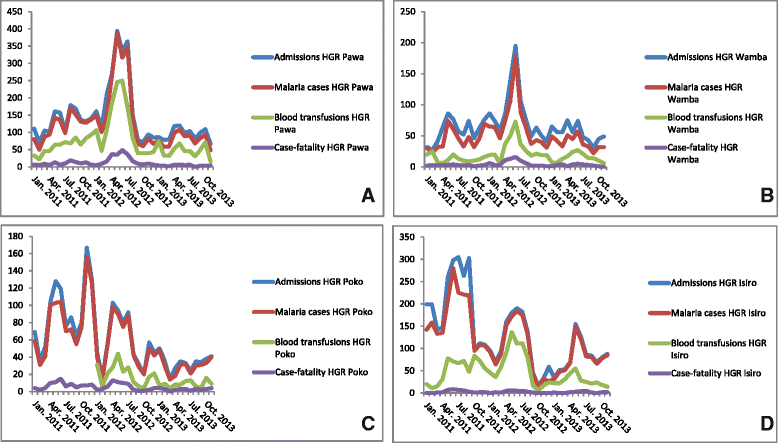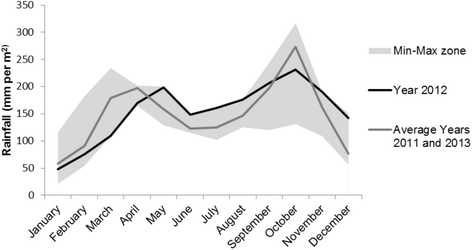Microbiological, clinical and molecular findings of non-typhoidal Salmonella bloodstream infections associated with malaria, Oriental Province, Democratic Republic of the Congo
- PMID: 27286886
- PMCID: PMC4902913
- DOI: 10.1186/s12879-016-1604-1
Microbiological, clinical and molecular findings of non-typhoidal Salmonella bloodstream infections associated with malaria, Oriental Province, Democratic Republic of the Congo
Abstract
Background: In sub-Saharan Africa, non-typhoidal Salmonella (NTS) can cause bloodstream infections, referred to as invasive non-typhoidal Salmonella disease (iNTS disease); it can occur in outbreaks and is often preceded by malaria. Data from Central Africa is limited.
Methods: Clinical, microbiological and molecular findings of NTS recovered in a blood culture surveillance project (2009-2014) were analyzed.
Results: In March-July 2012 there was an epidemic increase in malaria infections in the Oriental Province of the Democratic Republic of the Congo (DRC). In one referral hospital, overall hospital admissions in June 2012 were 2.6 times higher as compared to the same period in the years before and after (336 versus an average of 128 respectively); numbers of malaria cases and blood transfusions were nearly three- and five-fold higher respectively (317 versus 112 and 250 versus 55). Case fatality rates (in-hospital deaths versus all admissions) peaked at 14.6 %. Salmonella Typhimurium and Salmonella Enteritidis together accounted for 88.9 % of pathogens isolated from blood cultures collected during an outreach visit to the affected districts in June 2012. Children infected with Salmonella Enteritidis (33 patient files available) tended to be co-infected with Plasmodium falciparum more often than children infected with Salmonella Typhimurium (40 patients files available) (81.8 % versus 62.5 %). Through the microbiological surveillance project (May 2009-May 2014) 113 unique NTS isolates were collected (28.5 % (113/396) of pathogens); most (95.3 %) were recovered from children < 15 years. Salmonella Typhimurium (n = 54) and Salmonella Enteritidis (n = 56) accounted for 47.8 % and of 49.6 % NTS isolates respectively. Multilocus variable-number tandem-repeat analysis (MLVA) revealed more heterogeneity for Salmonella Typhimurium than for Salmonella Enteritidis. Most (82/96, 85.4 %) NTS isolates that were available for antibiotic susceptibility testing were multidrug resistant. All isolates were susceptible to ceftriaxone and azithromycin.
Conclusion: During the peak of an epidemic increase in malaria in the DRC in 2012, a high proportion of multidrug resistant Salmonella Typhimurium and Salmonella Enteritidis were isolated from blood cultures. Overall, the two serovars showed subtle differences in clinical presentation and genetic diversity.
Keywords: Antibiotic; Bloodstream infections; Children; Democratic Republic of the Congo; Malaria; Molecular typing; Salmonella; Symptoms.
Figures




Similar articles
-
Non-typhoidal Salmonella bloodstream infections in Kisantu, DR Congo: Emergence of O5-negative Salmonella Typhimurium and extensive drug resistance.PLoS Negl Trop Dis. 2020 Apr 2;14(4):e0008121. doi: 10.1371/journal.pntd.0008121. eCollection 2020 Apr. PLoS Negl Trop Dis. 2020. PMID: 32240161 Free PMC article.
-
Invasive Salmonella Infections at Multiple Surveillance Sites in the Democratic Republic of the Congo, 2011-2014.Clin Infect Dis. 2015 Nov 1;61 Suppl 4:S346-53. doi: 10.1093/cid/civ713. Clin Infect Dis. 2015. PMID: 26449951
-
Epidemic increase in Salmonella bloodstream infection in children, Bwamanda, the Democratic Republic of Congo.Eur J Clin Microbiol Infect Dis. 2014 Jan;33(1):79-87. doi: 10.1007/s10096-013-1931-8. Epub 2013 Aug 24. Eur J Clin Microbiol Infect Dis. 2014. PMID: 23975545
-
Invasive Nontyphoidal Salmonella Infections Among Children in Mali, 2002-2014: Microbiological and Epidemiologic Features Guide Vaccine Development.Clin Infect Dis. 2015 Nov 1;61 Suppl 4(Suppl 4):S332-8. doi: 10.1093/cid/civ729. Clin Infect Dis. 2015. PMID: 26449949 Free PMC article. Review.
-
Emergence of Community-Acquired, Multidrug-Resistant Invasive Nontyphoidal Salmonella Disease in Rural Western Kenya, 2009-2013.Clin Infect Dis. 2015 Nov 1;61 Suppl 4:S310-6. doi: 10.1093/cid/civ674. Clin Infect Dis. 2015. PMID: 26449946 Review.
Cited by
-
Intestinal carriage of invasive non-typhoidal Salmonella among household members of children with Salmonella bloodstream infection, Kisangani, DR Congo.Front Microbiol. 2023 Oct 12;14:1241961. doi: 10.3389/fmicb.2023.1241961. eCollection 2023. Front Microbiol. 2023. PMID: 37901802 Free PMC article.
-
Antimicrobial Resistance Rates and Surveillance in Sub-Saharan Africa: Where Are We Now?Infect Drug Resist. 2022 Jul 7;15:3589-3609. doi: 10.2147/IDR.S342753. eCollection 2022. Infect Drug Resist. 2022. PMID: 35837538 Free PMC article. Review.
-
Hepcidin regulation in Kenyan children with severe malaria and non-typhoidal Salmonella bacteremia.Haematologica. 2022 Jul 1;107(7):1589-1598. doi: 10.3324/haematol.2021.279316. Haematologica. 2022. PMID: 34498446 Free PMC article.
-
Diagnostic Bacteriology in District Hospitals in Sub-Saharan Africa: At the Forefront of the Containment of Antimicrobial Resistance.Front Med (Lausanne). 2019 Sep 23;6:205. doi: 10.3389/fmed.2019.00205. eCollection 2019. Front Med (Lausanne). 2019. PMID: 31608280 Free PMC article. Review.
-
Invasive Nontyphoidal Salmonella Disease in Africa.EcoSal Plus. 2019 Jan;8(2):10.1128/ecosalplus.ESP-0007-2018. doi: 10.1128/ecosalplus.ESP-0007-2018. EcoSal Plus. 2019. PMID: 30657108 Free PMC article. Review.
References
-
- Gordon MA, Graham SM, Walsh AL, Wilson L, Phiri A, Molyneux E, et al. Epidemics of invasive Salmonella enterica serovar enteritidis and S-enterica serovar typhimurium infection associated with multidrug resistance among adults and children in Malawi. Clin Infect Dis. 2008;46(7):963–9. doi: 10.1086/529146. - DOI - PubMed
MeSH terms
Substances
LinkOut - more resources
Full Text Sources
Other Literature Sources
Medical

